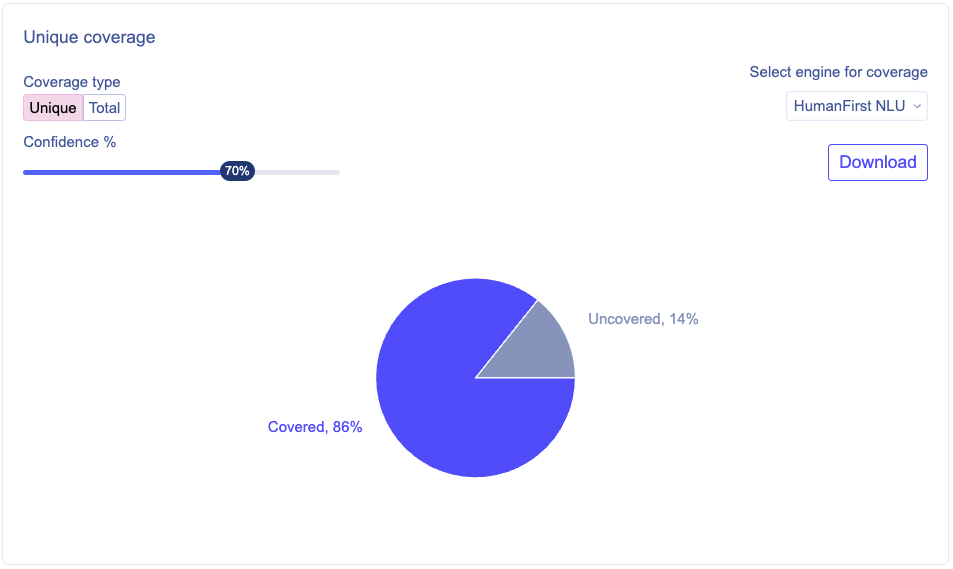Intent coverage
Configuring your coverage report#

Selecting the NLU engine#
Select the NLU engine for which you want to analyze coverage metrics. You'll typically want to use your production engine.
Selecting the coverage type (unique vs total)#
The different types of coverage will help extract different information from your model.
Total coverage#
Total coverage is what most people want to see: it represents the volume of data passing by each intent in your model.
Unique coverage#
Unique coverage helps understand how much of the data your model is covering. Or in other words, is your model covering all the variations in your data.
Selecting the coverage threshold#
The coverage threshold is the certainty at which you want an utterance to match an intent.
Interpreting the coverage data#
The downloaded CSV file will expose the coverage metrics for each intent in your model.
model_id#
ID of the NLU engine used to compute the coverage report.
utterance_count#
Count of utterances who's highest match was this intent, regardless of threshold.
utterance_hier_count#
Count of utterances who's highest match was this intent or one of its descendants, regardless of threshold.
utterance_score_histogram_thresholded_sum#
Count of utterances who's highest match was this intent, respecting the minimum threshold.
utterance_hier_score_histogram_thresholded_sum#
Count of utterances who's highest match was this intent or its descendants, respecting the minimum threshold.